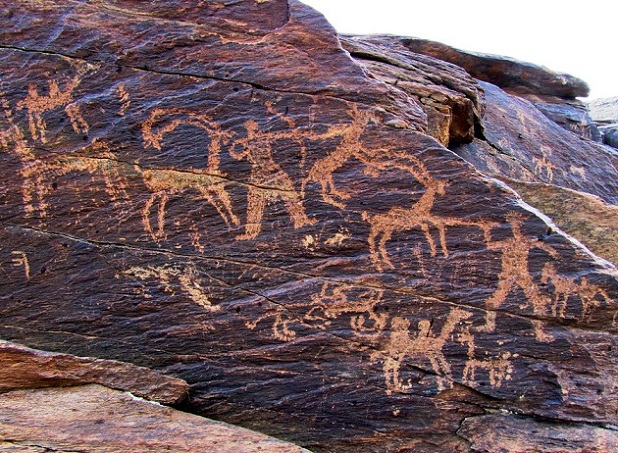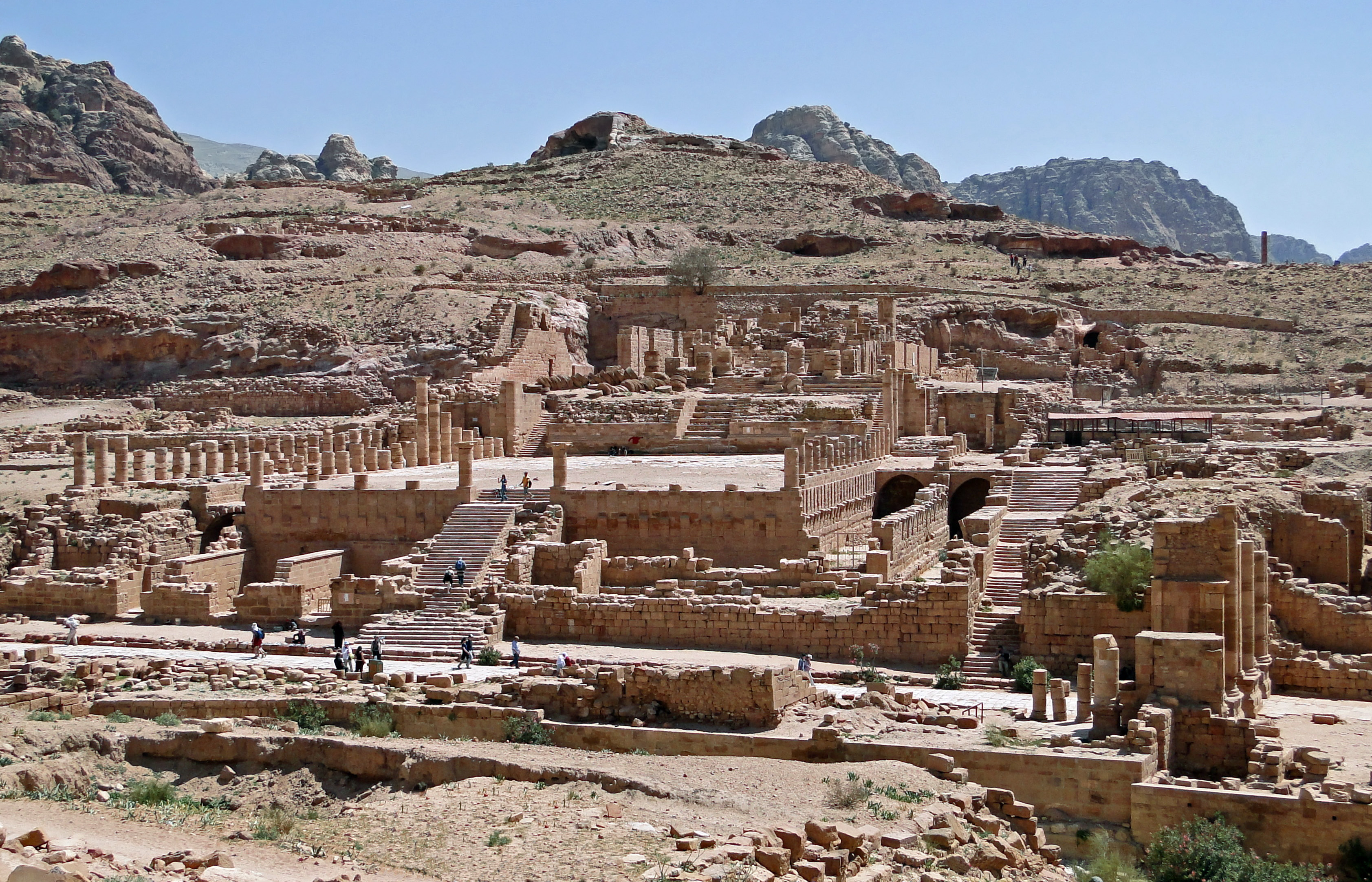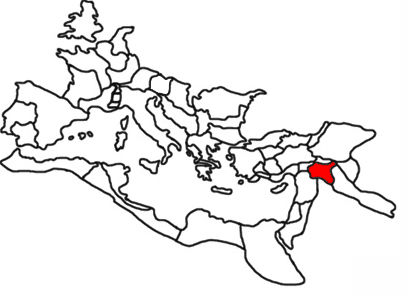|
Al-'Ula
al-Ula (), officially AlUla, is an ancient Arabian oasis city and governorate located in Medina Province, Saudi Arabia, northwest of the city of Medina. Situated in the Hejaz, a region that features prominently in the history of Islam as well as several pre-Islamic Semitic civilizations, al-Ula was a market city on the historic Incense trade route that linked India and the Persian Gulf to the Levant and Europe. From an archaeological perspective, the immediate vicinity contains a unique concentration of precious artifacts, including well-preserved ancient stone inscriptions that illustrate the development of the Arabic language, and a concentration of rock dwellings and tombs that date from the Nabatean and Dedanite periods that coincided with Greco-Roman influence during classical antiquity. Saudi Arabia's first UNESCO World Heritage Site, Hegra (also known as al-Hijr, or Mada'in Ṣalih), is located north of the city, in al-Ula governorate. Built more than 2,000 years a ... [...More Info...] [...Related Items...] OR: [Wikipedia] [Google] [Baidu] |
List Of Cities And Towns In Saudi Arabia
The following is a list of cities and towns in Saudi Arabia. List of Metro Cities There are 5 large cities or metropolitan area, metro cities in Saudi Arabia with the population over a million or more. Alphabetical list of cities and towns See also * Provinces of Saudi Arabia * List of governorates of Saudi Arabia References Central Department of Statistics and Information {{Portal, Saudi Arabia Lists of cities by country, Saudi Arabia, List of cities and towns in Populated places in Saudi Arabia, * Saudi Arabia geography-related lists, Cities ... [...More Info...] [...Related Items...] OR: [Wikipedia] [Google] [Baidu] |
Medina
Medina, officially al-Madinah al-Munawwarah (, ), also known as Taybah () and known in pre-Islamic times as Yathrib (), is the capital of Medina Province (Saudi Arabia), Medina Province in the Hejaz region of western Kingdom of Saudi Arabia, Saudi Arabia. It is one of the oldest and most important places in Islamic history. The Holiest sites in Islam, second holiest city in Islam, the population as of 2022 is 1,411,599, making it the List of cities and towns in Saudi Arabia, fourth-most populous city in the country. Around 58.5% of the population are Saudi citizens and 41.5% are foreigners. Located at the core of the Medina Province in the western reaches of the country, the city is distributed over , of which constitutes the city's urban area, while the rest is occupied by the Hijaz Mountains, Hejaz Mountains, empty valleys, Agriculture in Saudi Arabia, agricultural spaces and older dormant volcanoes. Medina is generally considered to be the "cradle of Islamic culture and ci ... [...More Info...] [...Related Items...] OR: [Wikipedia] [Google] [Baidu] |
Memory Of The World Programme
UNESCO's Memory of the World (MoW) Programme is an international initiative to safeguard the documentary heritage of humanity against collective amnesia, neglect, decay over time and climatic conditions, as well as deliberate destruction. It calls for the preservation of valuable archival holdings, library collections, and private individual compendia all over the world for posterity, the reconstitution of dispersed or displaced documentary heritage, and increased accessibility to, and dissemination of, these items. Following the establishment of the international register, UNESCO and the Memory of the World Programme have encouraged the creation of national and regional organizations as well as national and regional registers which focus on documentary heritage of great regional or national importance, but not necessarily of global importance. Overview The Memory of the World Register is a compendium of documents, manuscripts, oral traditions, audio-visual materials, library, ... [...More Info...] [...Related Items...] OR: [Wikipedia] [Google] [Baidu] |
Petroglyph
A petroglyph is an image created by removing part of a rock surface by incising, picking, carving, or abrading, as a form of rock art. Outside North America, scholars often use terms such as "carving", "engraving", or other descriptions of the technique to refer to such images. Petroglyphs, estimated to be 20,000 years old are classified as protected monuments and have been added to the tentative list of UNESCO's World Heritage Sites. Petroglyphs are found worldwide, and are often associated with prehistoric peoples. The word comes from the Greek prefix , from meaning " stone", and meaning "carve", and was originally coined in French as . In scholarly texts, a ''petroglyph'' is a rock engraving, whereas a '' petrograph'' (or ''pictograph'') is a rock painting. In common usage, the words are sometimes used interchangeably. Both types of image belong to the wider and more general category of rock art or parietal art. Petroforms, or patterns and shapes made by man ... [...More Info...] [...Related Items...] OR: [Wikipedia] [Google] [Baidu] |
Epigraphy
Epigraphy () is the study of inscriptions, or epigraphs, as writing; it is the science of identifying graphemes, clarifying their meanings, classifying their uses according to dates and cultural contexts, and drawing conclusions about the writing and the writers. Specifically excluded from epigraphy are the historical significance of an epigraph as a document and the artistic value of a literature, literary composition. A person using the methods of epigraphy is called an ''epigrapher'' or ''epigraphist''. For example, the Behistun inscription is an official document of the Achaemenid Empire engraved on native rock at a location in Iran. Epigraphists are responsible for reconstructing, translating, and dating the trilingual inscription and finding any relevant circumstances. It is the work of historians, however, to determine and interpret the events recorded by the inscription as document. Often, epigraphy and history are competences practised by the same person. Epigraphy is ... [...More Info...] [...Related Items...] OR: [Wikipedia] [Google] [Baidu] |
The Times Of India
''The Times of India'' (''TOI'') is an Indian English-language daily newspaper and digital news media owned and managed by the Times Group. It is the List of newspapers in India by circulation, third-largest newspaper in India by circulation and List of newspapers by circulation, largest selling English-language daily in the world. It is the oldest English-language newspaper in India, and the second-oldest Indian newspaper still in circulation, with its first edition published in 1838. It is nicknamed as "The Old Lady of Bori Bunder", and is a newspaper of record. Near the beginning of the 20th century, Lord Curzon, the Viceroy of India, called ''TOI'' "the leading paper in Asia". In 1991, the BBC ranked ''TOI'' among the world's six best newspapers. It is owned and published by Bennett, Coleman & Co. Ltd. (BCCL), which is owned by the Sahu Jain family. In the Brand Trust Report India study 2019, ''TOI'' was rated as the most trusted English newspaper in India. In a 2021 surve ... [...More Info...] [...Related Items...] OR: [Wikipedia] [Google] [Baidu] |
Petra
Petra (; "Rock"), originally known to its inhabitants as Raqmu (Nabataean Aramaic, Nabataean: or , *''Raqēmō''), is an ancient city and archaeological site in southern Jordan. Famous for its rock-cut architecture and water conduit systems, Petra is also called the "Rose City" because of the colour of the sandstone from which it is carved. The city is one of the New 7 Wonders of the World and a UNESCO World Heritage Site. The area around Petra has been inhabited from as early as 7000 BC, and was settled by the Nabataeans, a nomadic Arab people, in the 4th century BC. Petra would later become the capital city of the Nabataean Kingdom in the second century BC. The Nabataeans invested in Petra's proximity to the incense trade routes by establishing it as a major regional trading hub, which gained them considerable revenue. Unlike their enemies, the Nabataeans were accustomed to living in the barren deserts and thus were able to defend their kingdom. They were particularly sk ... [...More Info...] [...Related Items...] OR: [Wikipedia] [Google] [Baidu] |
UNESCO
The United Nations Educational, Scientific and Cultural Organization (UNESCO ) is a List of specialized agencies of the United Nations, specialized agency of the United Nations (UN) with the aim of promoting world peace and International security, security through international cooperation in education, arts, sciences and culture. It has 194 Member states of UNESCO, member states and 12 associate members, as well as partners in the Non-governmental organization, non-governmental, Intergovernmental organization, intergovernmental and private sector. Headquartered in Paris, France, UNESCO has 53 regional field offices and 199 National Commissions for UNESCO, national commissions. UNESCO was founded in 1945 as the successor to the League of Nations' International Committee on Intellectual Cooperation.English summary). UNESCO's founding mission, which was shaped by the events of World War II, is to advance peace, sustainable development and human rights by facilitating collaboratio ... [...More Info...] [...Related Items...] OR: [Wikipedia] [Google] [Baidu] |
Classical Antiquity
Classical antiquity, also known as the classical era, classical period, classical age, or simply antiquity, is the period of cultural History of Europe, European history between the 8th century BC and the 5th century AD comprising the interwoven civilizations of ancient Greece and ancient Rome, Rome known together as the Greco-Roman world, centered on the Mediterranean Basin. It is the period during which ancient Greece and Rome flourished and had major influence throughout much of Europe, North Africa, and West Asia. Classical antiquity was succeeded by the period now known as late antiquity. Conventionally, it is often considered to begin with the earliest recorded Homeric Greek, Epic Greek poetry of Homer (8th–7th centuries BC) and end with the fall of the Western Roman Empire in 476 AD. Such a wide span of history and territory covers many disparate cultures and periods. ''Classical antiquity'' may also refer to an idealized vision among later people of what was, in Ed ... [...More Info...] [...Related Items...] OR: [Wikipedia] [Google] [Baidu] |
Nabataeans
The Nabataeans or Nabateans (; Nabataean Aramaic: , , vocalized as ) were an ancient Arabs, Arab people who inhabited northern Arabian Peninsula, Arabia and the southern Levant. Their settlements—most prominently the assumed capital city of Raqmu (present-day Petra, Jordan)—gave the name ''Nabatene'' () to the Arabian borderland that stretched from the Euphrates to the Red Sea. The Nabateans emerged as a distinct civilization and political entity between the 4th and 2nd centuries BC, with Nabataean Kingdom, their kingdom centered around a loosely controlled trading network that brought considerable wealth and influence across the ancient world. Described as fiercely independent by contemporary Greco-Roman accounts, the Nabataeans were annexed into the Roman Empire by Emperor Trajan in 106 AD. Nabataeans' individual culture, easily identified by their characteristic finely potted painted ceramics, was adopted into the larger Greco-Roman culture. They converted to Christi ... [...More Info...] [...Related Items...] OR: [Wikipedia] [Google] [Baidu] |
Europe
Europe is a continent located entirely in the Northern Hemisphere and mostly in the Eastern Hemisphere. It is bordered by the Arctic Ocean to the north, the Atlantic Ocean to the west, the Mediterranean Sea to the south, and Asia to the east. Europe shares the landmass of Eurasia with Asia, and of Afro-Eurasia with both Africa and Asia. Europe is commonly considered to be Boundaries between the continents#Asia and Europe, separated from Asia by the Drainage divide, watershed of the Ural Mountains, the Ural (river), Ural River, the Caspian Sea, the Greater Caucasus, the Black Sea, and the waterway of the Bosporus, Bosporus Strait. "Europe" (pp. 68–69); "Asia" (pp. 90–91): "A commonly accepted division between Asia and Europe ... is formed by the Ural Mountains, Ural River, Caspian Sea, Caucasus Mountains, and the Black Sea with its outlets, the Bosporus and Dardanelles." Europe covers approx. , or 2% of Earth#Surface, Earth's surface (6.8% of Earth's land area), making it ... [...More Info...] [...Related Items...] OR: [Wikipedia] [Google] [Baidu] |
Levant
The Levant ( ) is the subregion that borders the Eastern Mediterranean, Eastern Mediterranean sea to the west, and forms the core of West Asia and the political term, Middle East, ''Middle East''. In its narrowest sense, which is in use today in archaeology and other cultural contexts, it is equivalent to Cyprus and a stretch of land bordering the Mediterranean Sea in Western AsiaGasiorowski, Mark (2016). ''The Government and Politics of the Middle East and North Africa''. p. 5: "... today the term ''Levantine'' can describe shared cultural products, such as Levantine cuisine or Levantine archaeology". .Steiner & Killebrew, p9: "The general limits ..., as defined here, begin at the Plain of 'Amuq in the north and extend south until the Wâdī al-Arish, along the northern coast of Sinai. ... The western coastline and the eastern deserts set the boundaries for the Levant ... The Euphrates and the area around Jebel el-Bishrī mark the eastern boundary of the northern Levant, as d ... [...More Info...] [...Related Items...] OR: [Wikipedia] [Google] [Baidu] |








